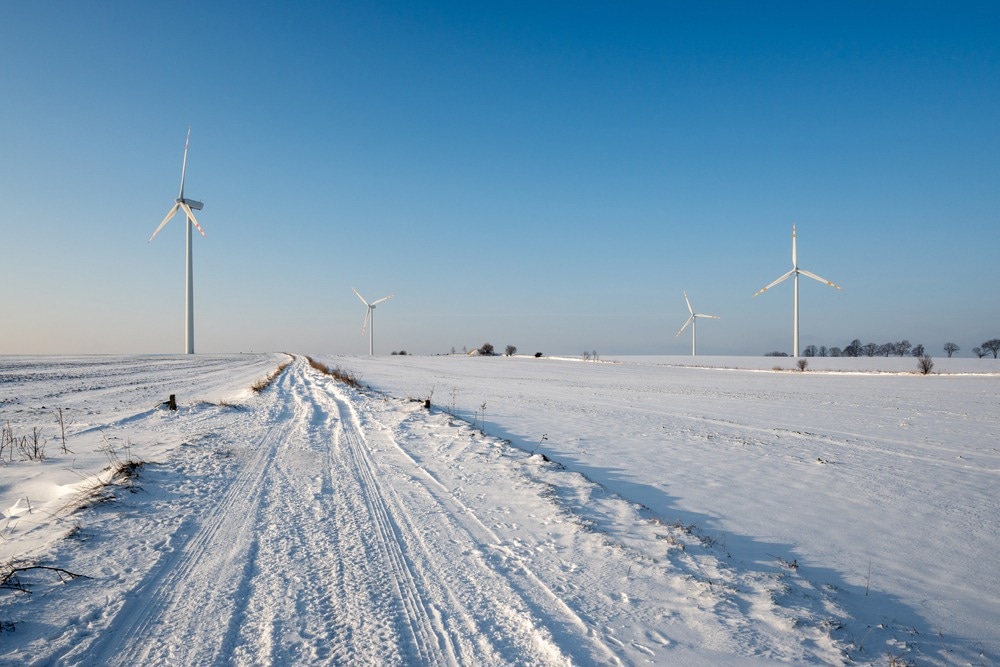By clicking “Allow All” you agree to the storing of cookies on your device to enhance site navigation, analyse site usage and support us in providing free open access scientific content. More info.
At Aarhus University, a new research project has developed intelligent, autonomous drones that have the potential to fly out to wind farms and scan, detect and account for any ice on the turbines’ blades.
Image Credit: vivooo/Shutterstock.com
The Independent Research Fund Denmark has been financially supporting the project with DKK 2.8 million. The project has been led by Associate Professor Erdal Kayacan from the Department of Electrical and Computer Engineering at Aarhus University and is conducted in collaboration with Vestas.
It's damn hard to detect ice on turbine blades because ice is transparent. In this project, we’re going to try out several different sensor systems built into the drones. We’re also going to develop an AI-controlled algorithm that uses advanced image recognition to see the difference between blades with and without icing.
Erdal Kayacan, Associate Professor, Department of Electrical and Computer Engineering, Aarhus University
The ice on wind turbine blades is considered a major issue. As soon as winter sets in and colder temperatures take over, the energy produced by wind turbines could be disrupted severely by the formation of ice on the blades. Ice can decrease the yearly energy production of wind farms by up to 80%.
The ice decreases the blades’ aerodynamic efficiency, increases the load, and can result in unwanted mechanical vibrations if the icing seems to be irregular. Extreme conditions can even force wind farms to shut down and cost the wind energy industry billions.
It’s a serious problem for wind farms. At present, they heat the blades, but they do so indiscriminately: they can’t see exactly where icing is taking place. This project aims to identify precisely which wind turbines have icing and exactly where on the blade that icing is located. Once you’ve done that, you can heat the specific area, and this in turn saves energy consumption and thereby optimizes operations.
Erdal Kayacan, Associate Professor, Department of Electrical and Computer Engineering, Aarhus University
Emre Yildiz, Simulation and Strategy Specialist at Vestas, added, “With this strategic collaboration we aim to lay the foundation for achieving higher wind turbine performance, longer turbine lifetime, and market expansion in colder climates.”
As renewable energy seems to be essential to fulfilling ambitions in the Paris Agreement, determining new and viable sites for green energy production is vital. This must also consist of sites in colder climates.
“The project has particular attention and support by the Vestas management and hopefully lead to further collaborative research and development further on,” stated Emre Yildiz.
With the availability of different sensors (thermal cameras, LIDAR, RGB cameras, ultrasound, etc.), the project will test drones. This is done to determine the best combination of AI algorithms and technologies.
We expect to carry out the first test on an offshore wind turbine next winter, but first we have to use calculations and models to hit on the right solution.
Erdal Kayacan, Associate Professor, Department of Electrical and Computer Engineering, Aarhus University
Source: https://international.au.dk/
Do you have a review, update or anything you would like to add to this news story?
Cancel reply to comment
Mining brings about risk and danger with falling rocks, entrapment, and fire endangering the safety of workers on a regular basis.
Learn more about how the use of micro-robotics in ocean exploration could be the future of understanding life on both distant planetary objects like Jupiter's moons, and reveal how life began on Earth.
Automation in food analysis is growing for similar reasons, but it will also see growth due to increased food safety regulations and improving technology.
Discover Cavitar’s welding cameras that can be used in a variety of situations to offer high-quality visualization of the welding processes.
This page discusses Celera Motion’s Capitan Series to their line of premium performance Ingenia servo drives.
This page details the capabilities of the TeraRanger Evo Mini, a single- and multi-pixel capability in one sensor.
AZoRobotics.com – An AZoNetwork Site
Owned and operated by AZoNetwork, © 2000-2022



